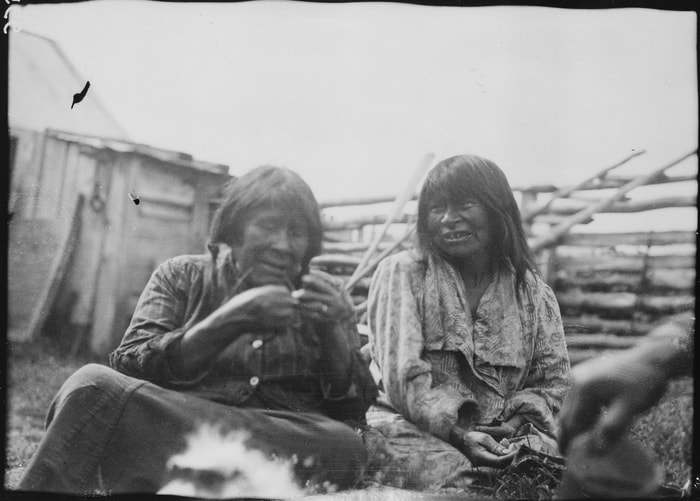"Then, further westward, among the steep, mountainous defiles of the Strait, on either side, the smokes of the treacherous canoe Indians, the Alaculoops and Yahgans, were stenciled blue against the dank, somber woods which clothe most of the mountains of these islands to the height of a thousand feet."
-Charles Wellington Furlong, 1911
Furlong thought that at the time he visited Tierra del Fuego, there were only a few hundred Yaghan. By the time Samuel K. Lothrop visited in 1925, he estimated that there were only 40-50 Yaghan. According to the 2002 Chilean census, there are over 1,500 members. The last "full-blooded" Yaghan, and the last native speaker of the language is 89 year-old Christina Calderon. Here is a video of Mrs. Calderon speaking Yaghan:
In Anne Chapman's book, she writes that she believes the more people learn about the Yaghan and how they have adapted, the more people will respect and admire their culture and history. I hope that's true.
Further learning:
Samuel K. Lothrop's book on the native peoples of Tierra del Fuego offers an in-depth look at the lives of the Ona and Yaghan people around 1925, even though it includes some analysis of the physiology of the indigenous people that were common in the 1920s that we find bizarre and unacceptable today. A video from the Chilean government about Christina Calderon.
0 Comments
Your comment will be posted after it is approved.
Leave a Reply. |
Come in, the stacks are open.Away from prying eyes, damaging light, and pilfering hands, the most special collections are kept in closed stacks. You need an appointment to view the objects, letters, and books that open a door to the past. Archives
April 2023
Categories
All
|



 RSS Feed
RSS Feed